0 Comments
Yes, Gladyszewski does invoke magic by concealing bodies in darkness, like when Martin Bélanger’s arms appear out of nothingness from behind a strip of light and float in the air. The image recalls Brice Leroux’s Quantum-Quintet (FTA, 2007) and Cindy Van Acker’s Obtus (FTA, 2011). Half-seen, the movement becomes inexplicable. Lights in the sky are a familiar sight; it’s only when they move in unexpected ways that we suspect alien life. It’s for this reason that I’m less convinced by the voice work of the performers, decidedly too human.
For the most part, however, Gladyszewski uses technology to reveal what is always there but which usually goes unseen. Such is the case with cameras that reveal the heat patterns of the human body and of the liquids it comes in contact with. Suddenly, it’s like we’ve entered a psychedelic world where the human body is turned inside out, a world of tie-dye souls and auras as moving skins. The body becomes as malleable as playdough, liquefies before our very eyes. We are witness to the com/motion of the dis/embodied internal. Our bodies are haunted by spirits whose life force is muffled by their shells. It’s otherworldly, yet the internal landscape laid before us is so recognizable that I was tempted to scream, “This is the real world! The world where our bodies appear to be solid is obviously a lie!” And I was completely sober. That’s why you should see Phos. May 28-31 Place des Arts – Studio O Vertigo www.fta.qc.ca 514.844.3822 Tickets: 29$ / 30 years old and under: 23$
Israeli choreographer Arkadi Zaides is that mirror in Archive, a demanding but necessary performance presented by Festival TransAmériques. Zaides took a series of video images from B’tselem, an Israeli center for human rights in the occupied territories, only selecting excerpts featuring Israeli men, no doubt to avoid speaking for or against the Other.
Zaides pauses the video, espouses the position of one of its protagonists, spins it 180 degrees, mirrors it, flips it by 90 degrees, leaning against the floor to give us the view of the top of his head, like the one the camera gives us by hovering above the protagonist. Archive is challenging because of its subject matter and its clinical approach, the live dance performance being overshadowed by the video images. When it does work, it’s because of the confrontational attitude that necessarily emerges given the source material, as Zaides walks towards us with aggression in his eyes (the audience is visible throughout the show as the house lights, though dim, remain on) before switching to the movement of a man waving his arms around to try to scare sheep away. Before us, humans become animals that need to be displaced. Zaides often returns to this movement. Archive is at its most powerful near the end, when Zaides replicates the vocalizations of the men in the videos into a microphone, looping them, building a soundtrack that is increasingly oppressive and violent. It’s hard to bear even for a few minutes. Imagine for hours, for weeks, for years… May 24-26 at 7pm Place des Arts – Cinquième Salle www.fta.qc.ca 514.844.3822 Tickets: 39$ / 30 years old and under: 33$ 25-27 mars à 20h
Usine C www.usine-c.com 514.521.4493 Billets : 32$ / Étudiants ou 30 ans et moins : 24$ 1. Tragédie, Olivier Dubois (Danse Danse)
Avec son opus pour dix-huit danseurs nus, Dubois a abordé les grands thèmes (le passage du temps, la mortalité, la petitesse de la vie humaine, le rôle de l’art, l’humanité) en prenant son temps, en n’empruntant aucun raccourci facile, en laissant le sens émerger de lui-même. 2. Uncanny Valley Stuff, Dana Michel (Usine C) Avec Uncanny Valley Stuff, Michel a continué sa recherche entamée avec Yellow Towel, spectacle qui figure dans le top dix du magazine new-yorkais Time Out et pour lequel le prestigieux festival ImPulsTanz a créé un prix spécialement pour elle. Sa nouvelle courte pièce est toute aussi incisive mais encore plus drôle. En empilant les clichés sur les Noirs jusqu’à ce qu’ils s’entremêlent et se contredisent, Michel démontre l’absurdité de ces stéréotypes qui nous présentent une vision déformée du monde. 3. Antigone Sr.: Twenty Looks or Paris Is Burning at the Judson Church (L), Trajal Harrell (Festival TransAmériques) Antigone Sr. a probablement été le spectacle de danse qui a créé le plus de divisions cette année. On pourrait diviser le public en trois : ceux qui ont quitté la salle, ceux qui sont restés assis les bras croisés, et ceux qui se sont levés pour danser. Il n’est donc pas surprenant que le spectacle se retrouve dans mon palmarès. Il faut dire que je suis queer et que j’ai une affinité pour la danse post-moderne, ce qui me donne une double porte d’entrée sur le sujet. Pour ceux qui n’ont pas eu l’endurance nécessaire pour passer à travers ce défilé de mode DIY de deux heures, il serait bon de noter que les plus grands bals qui ont inspiré la pièce pouvaient durer jusqu’à dix heures de temps; comptez-vous chanceux! Peut-être comprenez-vous maintenant un peu mieux ce que c’est que de se sentir aliéné par la culture dominante. 4. Monsters, Angels and Aliens Are Not a Substitute for Spirituality…, Andrew Tay (OFFTA) Pour être honnête, lorsque j’ai vu la nouvelle pièce de Tay, qui vire de plus en plus dans le performance art, je me suis demandé si j’étais en train de regarder un artiste perdre la tête sur scène ou si Tay était en contrôle de son art. J’étais évidemment assez intrigué pour découvrir la réponse avec Summoning Aesthetics qu’il a ensuite présenté avec François Lalumière au Festival Phénomena. Conclusion : Tay continue dans la même veine ritualiste, sachant clairement dans quelle direction il va même s’il ne connaît pas nécessairement sa destination. J’ai admiré qu’il ait pris la décision de terminer Monsters sur une note différente de ce qu’il avait prévu pendant la représentation même. La misogynie latente qui avait l’habitude d’hanter ses pièces est disparue. Ce qui demeure est son ludisme, son humour et son ouverture aux expériences, peu importe ce qu’elles s’avèrent être. Si je me souviens bien, un spectateur avait qualifié Summoning Aesthetics « d’honnêteté perverse. » Cela me semble aussi approprié. 5. Built to Last, Meg Stuart (Festival TransAmériques) Avec Built to Last, Stuart (qui a reçu le Grand Prix de la Danse de Montréal) a abordé des thèmes similaires à ceux de Tragédie d’Olivier Dubois, mais de façon beaucoup plus théâtrale. En juxtaposant un immense mobile de notre système solaire avec une maquette d’un tyrannosaure et la danse contemporaine avec la musique classique, Stuart a démontré l’insignifiance des actions humaines et que notre seule rédemption possible se trouve dans l’art. 6. Florilège, Margie Gillis (Agora de la danse) Pour célébrer ses quarante ans de carrière, Gillis nous a offert cinq pièces de son répertoire revisitant les années 1978 à 1997. Par le fait même, elle nous a rappelé pourquoi elle est devenue une danseuse de telle renommée. L’intangible se manifeste à travers son corps, soulignant la fragilité de l’humain dans un univers chaotique. 7. Mange-moi, Andréane Leclerc (Tangente) Leclerc a utilisé la contorsion et la nudité pour aborder les relations de pouvoir entre les individus lorsque notre survie dépend des autres. Qu’elle puisse s’attaquer à de telles questions tout en offrant une des pièces les plus sensorielles de l’année démontre l’intelligence de son travail. 8. Tête-à-Tête, Stéphane Gladyszewski (Agora de la danse) Ma réaction à ma sortie de cette pièce de quinze minutes pour un seul spectateur à la fois : on doit donner à Gladyszewski tout l’argent dont il a besoin pour réaliser ses projets. Aucun autre chorégraphe n’arrive à intégrer la technologie avec autant d’adresse. Tête-à-Tête était à la fois intime, inquiétant et magique. 9. The Nutcracker, Maria Kefirova (Tangente) L’excentrique Kefirova a troqué l’écran vidéo pour des haut-parleurs et a démontré qu’elle maîtrise le son avec autant de flair que l’image. « Elle n’utilise pas le son pour meubler le silence comme le fond maints spectacles, mais pour matérialiser l’invisible, » disais-je. Difficile d’oublier la satisfaction ressentie lors de l’exutoire du tableau final, où Kefirova s’acharne à faire éclater des noix de Grenoble en morceaux en se servant de ses chaussures à talons hauts comme casse-noisette. 10. Junkyard/Paradis remix, Catherine Vidal (Usine C) J’espère avoir assez établi le fait que je suis un fan fini de Mélanie Demers pour pouvoir dire ceci (qui, je crois, n’est pas l’opinion populaire) : Junkyard/Paradis est probablement sa pièce que j’aime le moins. Lors de l’événement MAYDAY remix, où la chorégraphe a laissé des artistes remixer son travail, la metteure en scène Catherine Vidal a donné au spectacle la structure dramatique qu’il méritait avec une fin des plus jubilatoires. 11. loveloss, Michael Trent (Agora de la danse) Extrait de ma critique : « Trent n’a toujours pas peur de prendre le temps qu’il faut. De plus, il évite ici l’humour, le théâtral et le mouvement séducteur (athlétique, rapide, synchronisé), toutes ces astuces que des chorégraphes moins confiants utilisent pour que leur dance soit plus accessible. L’interprétation est sentie sans être affectée. loveloss est une œuvre touchante … » 12. Milieu de nulle part, Jean-Sébastien Lourdais (Agora de la danse) Pour la performance de l’année, celle de Sophie Corriveau, qui s’est méritée la toute première résidence de création pour interprètes offerte par l’Agora de la danse. Notons que le diffuseur s’est démarqué avec une programmation solide pour une deuxième année consécutive.
Yellow Towel is messy, and not only in the literal sense that the initially immaculate off-white stage becomes cluttered with props throughout the performance. It is hard to know by which end to pick it up because the edges are all blurred, like they’ve been rubbed off against one another until we are no longer sure what we are looking at exactly. Michel has constructed a show from deconstruction, like all the elements have been passed through a blender, so that it is hard to discuss any single aspect because none of them exist as such. So as I attempt to write about Yellow Towel, I feel it’s important to note that what I am talking about doesn’t even exist, that I am taking a fragment and dusting it off in order to better be able to describe it. However, that description is a lie because the dust is just as important as the fragment.
For these reasons, there is something of an exorcism to Michell’s performance, an unfiltered quality. Words and movements pour out of the body in a seemingly uncontrolled fashion, creating odd and often humorous juxtapositions. “In the beginning,” she might blurt out, but she’s not talking about the Word, though who knows… Her speech runs like an internal monologue, mostly incomprehensible to anyone who is not her, who does not know what fills the gaps. Her body appears to be as uncontrollable as her train of thought. She is hunched over, constantly shaking. When she removes her black hoodie, Q-tips are stuck in her hair. She takes one of them to clean out her ear while blowing in a trumpet. She uses a tiny white blow-up pool as a couch, which molds her body into awkward positions as she clumsily attempts to drink milk, more running down her face than her throat. The character she creates is also elusive. When she puts on a baseball cap, it maintains her hair over her face, rendering her anonymous. Never does she look at the audience, maintaining this internal world that we only get to peek at in the moments that strike us as potentially familiar. It is easy to understand why the prestigious ImPulsTanz Festival created an award especially for Michel. Her performance is one of the most compelling we have had the chance to see in recent years. She fully commits to it, appearing like a medium whose body has been taken over by this strange creature. So, when she spends a few minutes slowly drinking from a bowl of water, we are there with her with the same intensity we would be were she actually possessed. The experience is as fascinating as it is hilarious. December 4-6 at 8pm Montréal, arts interculturels www.m-a-i.qc.ca 514.982.3386 Tickets: 25$ / Students: 20$
Alors que le rideau transparent se retrouve à l’avant et sépare le public de l’artiste, les perspectives se multiplient. Les projecteurs en arrière-scène nous éblouissent, transformant l’espace où nous sommes assis en coulisses.
Adieu et Merci souffre quelque peu de la comparaison avec Paraiso, mais aussi de sa similarité avec Nothing’s for Something de Yukiko Shinozaki et Heine Avdal, dans lequel six rideaux de scène dansent, suspendus par d’énormes ballons soufflés à l’hélium, dans un ballet féérique. Ici, dans une fin ironique, le rideau se retrouve à l’écart en avant-scène, inutile pour dissimuler Laâbassi. Ne reste que la noirceur pour engloutir son corps. Elle ne revient pas pour les applaudissements et on la comprend; voilà déjà quarante-cinq minutes qu’elle nous faisait son salut. 1er novembre à 20h30 Usine C www.usine-c.com 514.521.4493 Billets : 25$ / Réduit : 24$
She then unzips the door of a black tent just big enough for one upright person and makes her way in, standing behind a podium that takes up most of the space. In a surprising display of thriftiness, she uses the clips from a hanger for pants to keep the door open. “Butter!” she blurts out into the microphone, apparently still on her dairy rant. Uncanny Valley Stuff becomes hilarious as stereotypes become confused, slide into each other, and such importance is unexpectedly bestowed upon something as trifling as butter. She takes it even further by sliding white gloves on and holding her hands up to the heavens, recalling a preacher and his faithful churchgoers as she implores, “Come, milkshake, come!”
Throughout the twenty-minute piece, Michel is making subtle but clever use of sound. When she is kneading dough, a microphone is lying by her side so that the unnecessarily heightened sound of a flour sifter becomes strangely funny in and of itself. By building on these images to the point where they bleed into one another, Michel reveals the absurdity of stereotypes as they coexist and contradict themselves, showing us that the lens through which we view the world is nothing more than a fun house mirror. October 24 & 25 at 7:30pm Usine C www.usine-c.com 514.521.4493 Tickets: 10$ 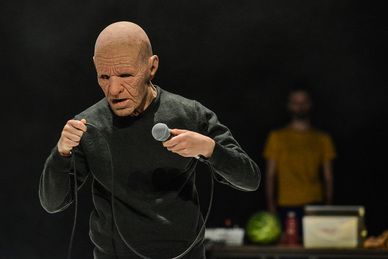 Ashlea Watkin in Nicolas Cantin's Klumzy Ashlea Watkin in Nicolas Cantin's Klumzy From March 25 to 27, dancer Anne Thériault will fill Ashlea Watkin’s shoes (and mask?) in Nicolas Cantin’s Klumzy. Here is what I had to say about the show when I saw it at Festival TransAmériques back in June. Spectacle. “Spectacle,” Ashlea Watkin repeats throughout Klumzy, as if to remind us that nothing should be taken at face value specifically because everything is face value. Or maybe it’s the opposite. Maybe it’s ironic since, as usual, show producer Nicolas Cantin does as little as he needs, giving us the opposite of the spectacle, antitheater. By saying the word, Watkin is transforming the context into content. The same could be said of Cantin’s presence onstage in this mostly-solo quasi-duo. It is as if he does not want us to forget that, while the show might be biographically about Watkin, it is his show and therefore is just as much about him. Maybe even more so. Watkin tells us that she used to be into Aerosmith, but that’s not the music Cantin plays on his laptop. When he plays punk rock, he’s the one dancing along to it, not her. By being onstage, Cantin is refusing the purity of biography. “It’s an image,” Watkin says. On a small square screen, a picture of her is projected. “It’s an image of me.” She might be talking about the picture, but she could also be talking about her live body, also mediated. “It’s me.” It is while wearing a mask of an old bald man that she is looking at her picture, creating a distance between the self and its representation at the same as she blurs the line between them. The recording of her voice has been manipulated, possibly speeded up, has a higher pitch certainly, has been chipmunked, rendered childlike. There is again a distance created between Watkin now and as a child – introducing the idea that maybe our memory should not be fully trusted – as well as a blurring between the two. That we dialogue with our selves only proves the inconsistency of said self; otherwise it would speak with a single voice. There is always something off in Cantin’s world, courtesy of aforementioned antitheater. Watkin speaks into a microphone, but she’s whispering. She’s doing so at the back of the stage, her back turned to the audience. Her microphone is on a stand, but she’s holding the stand sideways, so that it’s not resting on its legs. Wearing her mask – deceptively realistic, especially in soft light – she keeps opening her mouth slightly, as though chewing. The effect is unsettling. We know it’s a mask, and yet our mind constantly lapses into viewing it as a real face. To qualify as realistic, something has to be fake. At the end, Atkin pulls on a string to make the front legs of a chair hover slightly above the floor. This is as much magic as Cantin is willing to give us. March 25-27 at 8pm Usine C www.usine-c.com 514.521.4493 Tickets: 32$ / Students or 30 years old and under: 24$ 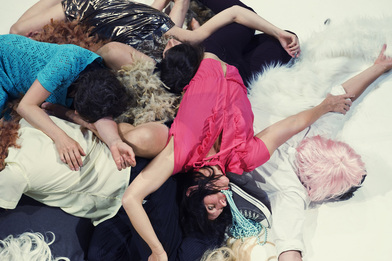 Pleasure Dome, photo de Yannick Grandmont Pleasure Dome, photo de Yannick Grandmont Si vous mettez une perruque, vous pouvez tout faire. Si vous ajoutez des lunettes de soleil, vous pouvez dépasser toutes les limites de ce qui est considéré comme un comportement acceptable. Le déguisement sert à camoufler certains aspects de soi pour permettre à de nouveaux d’émerger. Il en est de même de l’art. L’art est un mensonge qui révèle la vérité, Picasso a dit. Dans Pleasure Dome, la chorégraphe Karine Denault et les cinq autres interprètes (Dana Gingras, k.g. Guttman, Jonathan Parant, Alexandre St-Onge, Alexander Wilson) se cachent sous des perruques pour pouvoir aller au-delà du préconçu. Dès que l’on entre dans la salle de l’Agora de la danse, on le remarque; ce sont les trois danseuses qui se trouvent aux consoles de son, alors que les musiciens sont étendus sur le plancher. Après cette inversion des rôles, les interprètes marchent autour de la scène à quatre pattes. Certains se lèvent pour les guider pour un moment, pour ensuite retourner sur leurs quatre pattes et suivre le troupeau à nouveau. Les paramètres des rôles demeurent fluides, malléables, comme dans Cesena d’Anne Teresa De Keersmaeker. En laissant libre cours à leur id, les interprètes abandonnent leur ego, phénomène rare en performance scénique, et donc rafraichissant. En début de spectacle, Denault demeure coucher sur le plancher, s’efface. On avait déjà aperçu cet aspect de la chorégraphe dans son dernier solo, Not I & Others. Le plaisir, c’est aussi l’abandon de l’idéal – virgule – de la beauté. La beauté, si superficielle peut-elle être, pèse tout de même lourdement; le plaisir, quant à lui, est léger, comme les interprètes, qui semblent parfois flotter au-dessus de la scène, ou tout du moins au-dessus de nous, spectateurs assis directement sur le plancher. De façon surprenante (mais qui rejoint encore Cesena), le plaisir, aussi communautaire soit-il, demeure solitaire. Les interprètes se touchent rarement, mais le besoin d’une collectivité demeure nécessaire et indéniable. À intervalles réguliers, les interprètes retournent à un état contemplatif, comme s’il y avait toujours la possibilité d’un retour en arrière, d’un recommencement si le résultat est jugé insatisfaisant, à la manière d’un jeu vidéo. Rien ne doit être accepté comme étant définitif. Pleasure Dome aussi semble transitoire. Si on revenait la semaine prochaine, on ne serait pas surpris que ça l’ait une toute autre allure. Subjectif subjectif subjectif : j’ai une prédisposition pour un éclairage scénique minimale. Ça dramatise l’espace, surtout quand on veut tellement voir ce qui se passe. Je crois qu’ici aussi ça aurait pu avoir des effets bénéfiques. Ça aurait accentué l’espace entre les spectateurs et les interprètes; car malgré notre proximité (assis tout autour de la salle, nous sommes tous au premier rang), nous ne faisons pas partie de cet univers de plaisir. La distance virtuelle aurait souligné l’aspect participatif du plaisir; on ne peut pas compter sur les autres pour nous le transmettre. Le pleasure dome aurait paru tel le saint graal, une destination à atteindre, si on le désire. (J’aurais voulu qu’un des interprètes me donne la main, me donne la permission d’y entrer.) La plus grande force de Pleasure Dome est son refus du symbolique. Tout comme on ne peut parvenir au plaisir par un raccourci, le sens d’une œuvre d’art ne s’impose que s’il émerge de lui-même. C’est ici le cas. 6-8 février à 20h & 9 février à 16h Agora de la danse www.agoradanse.com 514.525.1500 Billets : 28$ / Réduits : 20$ |
Sylvain Verstricht
has an MA in Film Studies and works in contemporary dance. His fiction has appeared in Headlight Anthology, Cactus Heart, and Birkensnake. s.verstricht [at] gmail [dot] com Categories
All
|
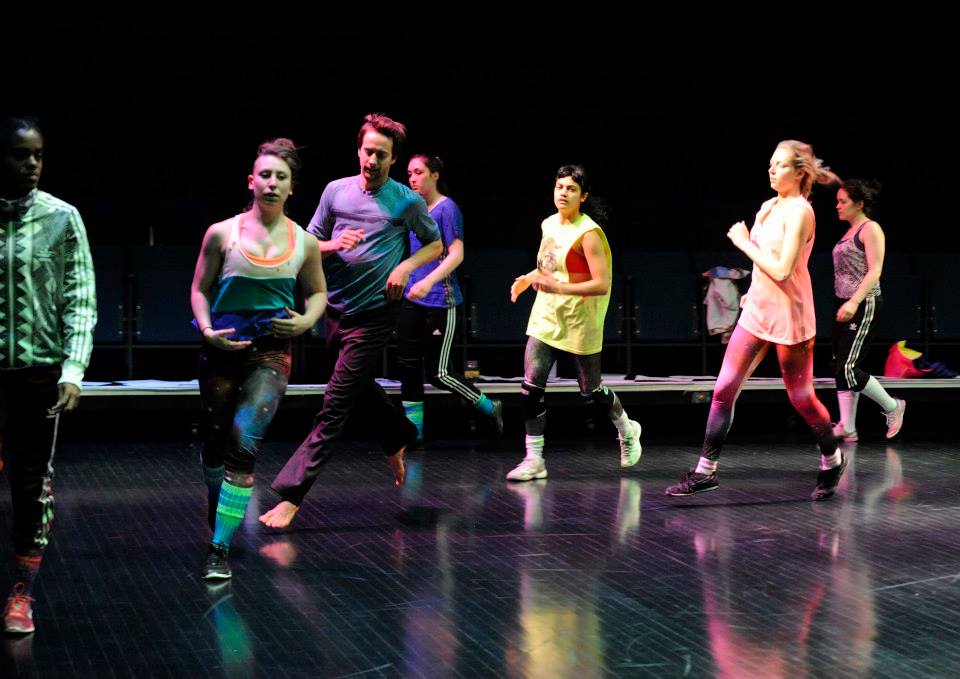
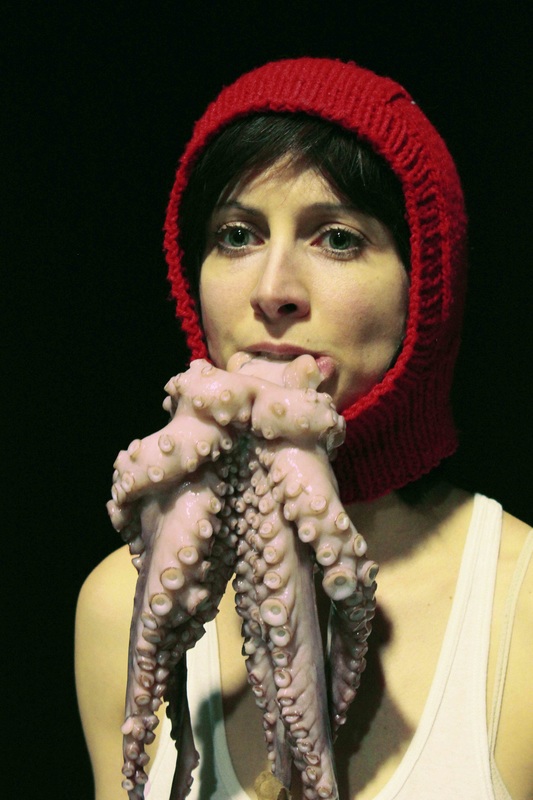
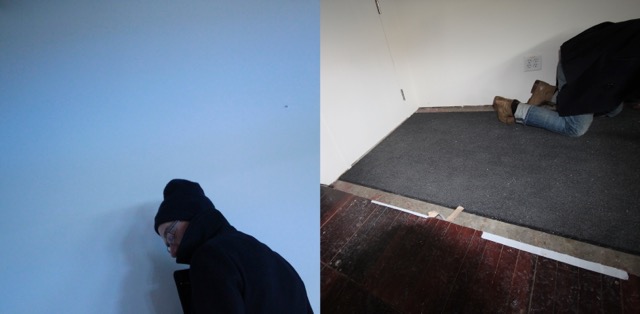
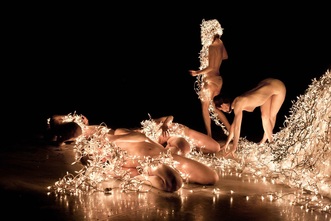
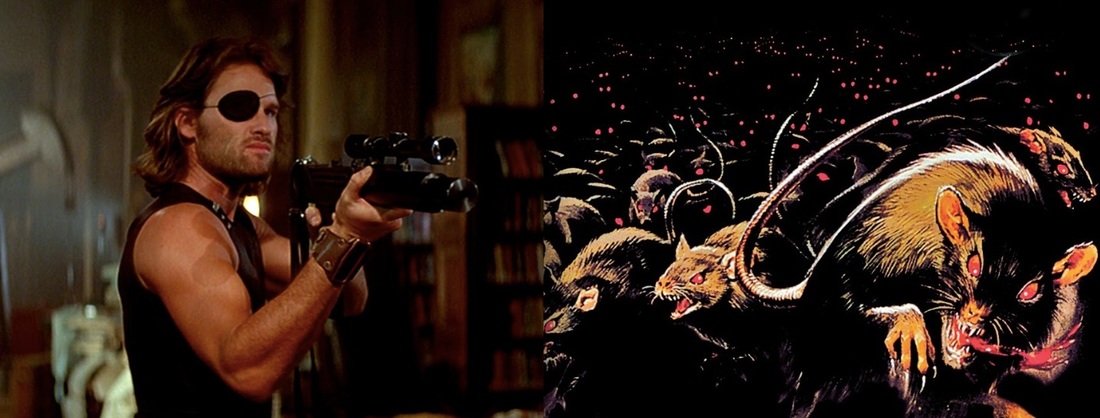
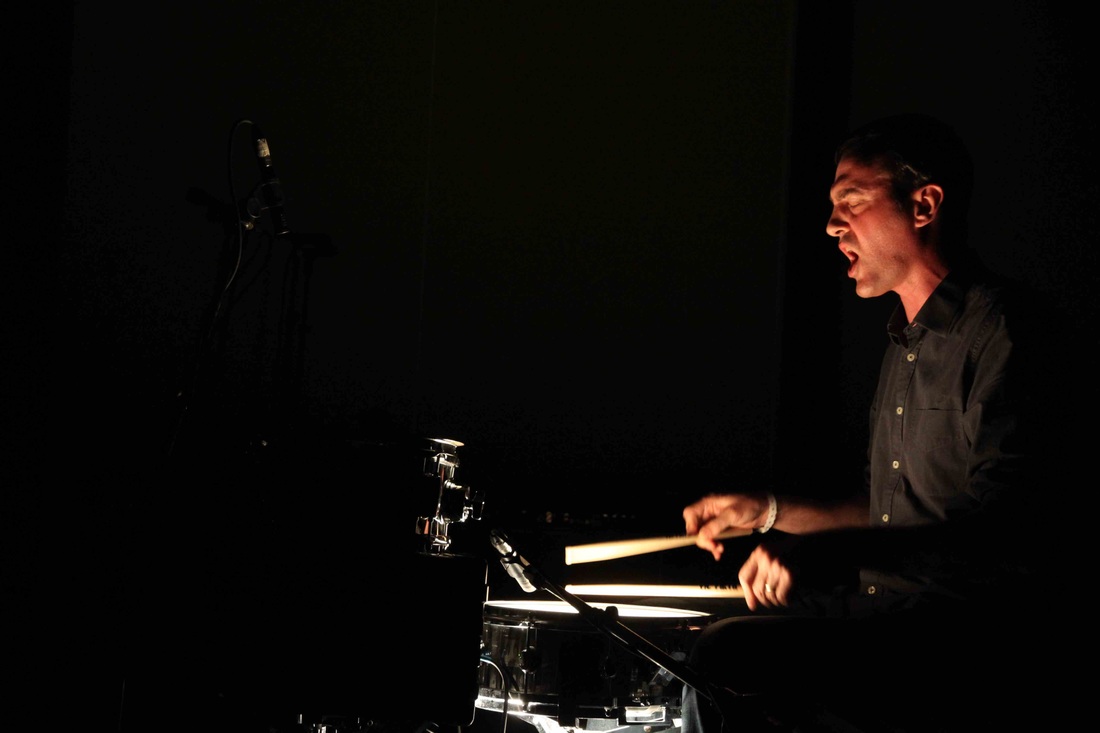

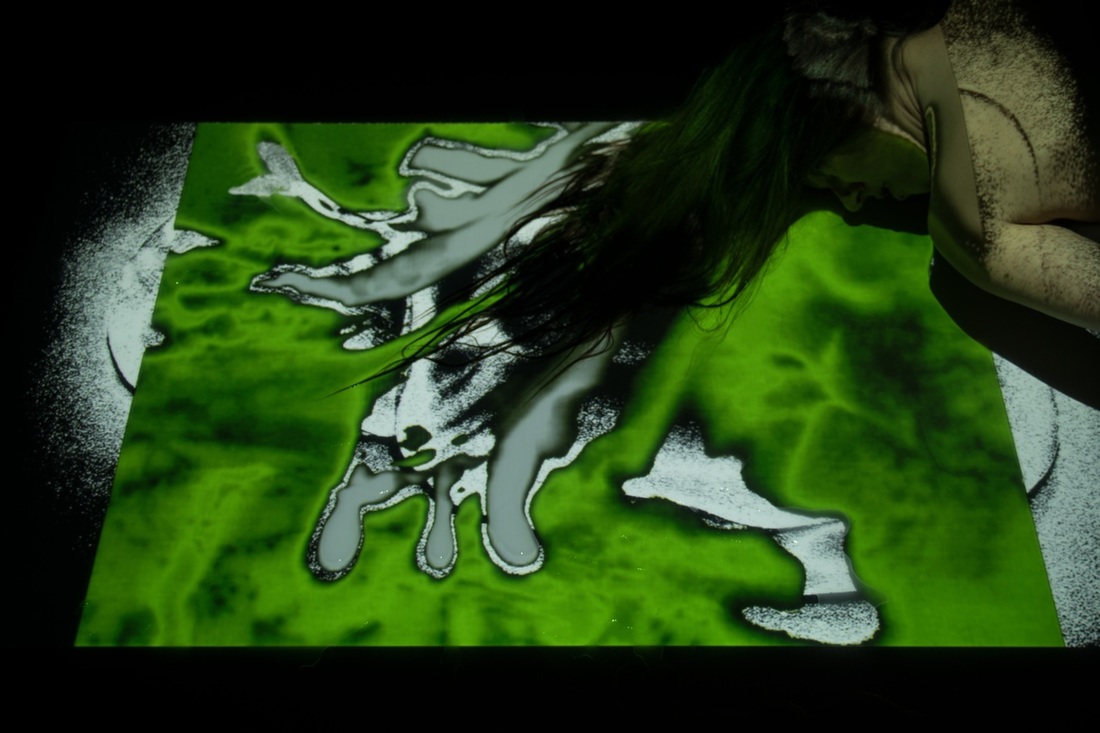
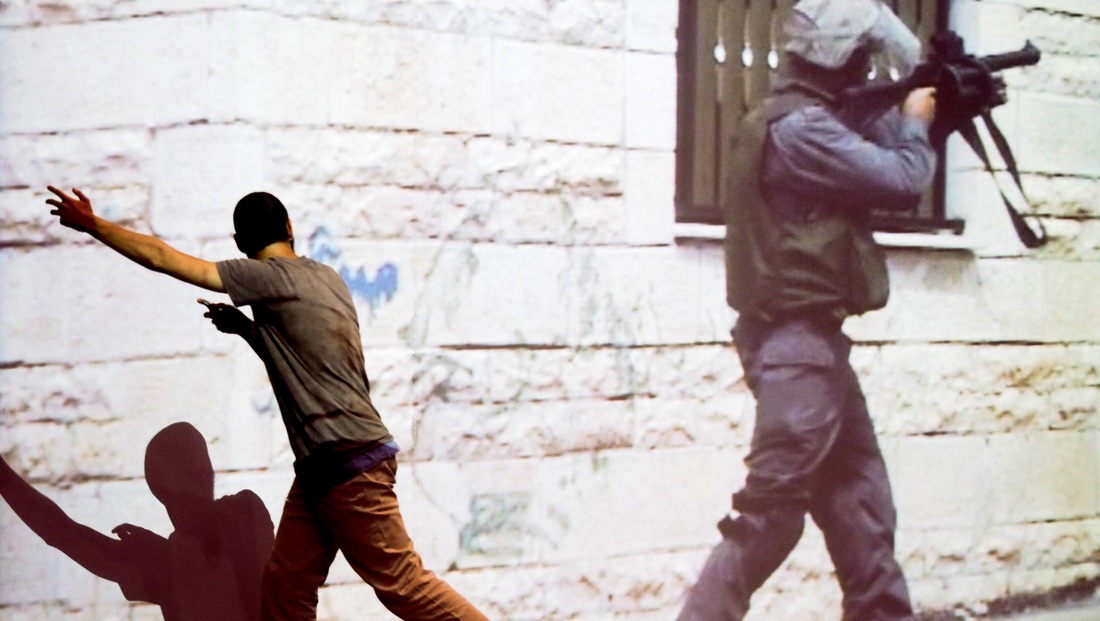
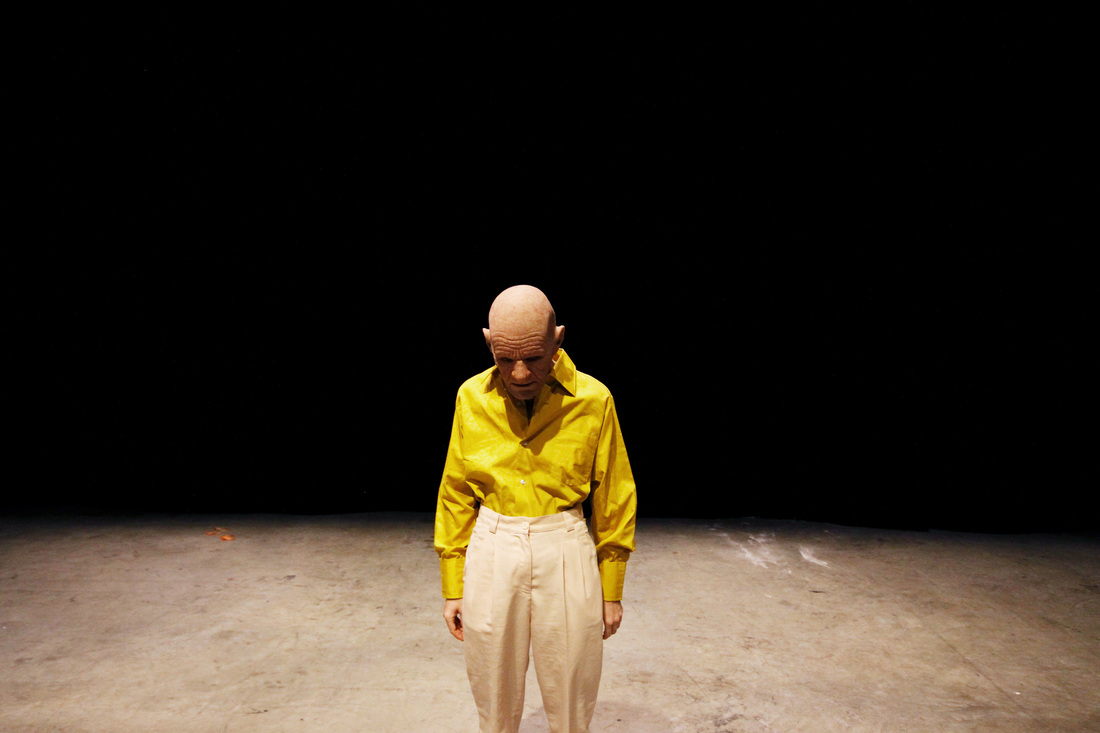
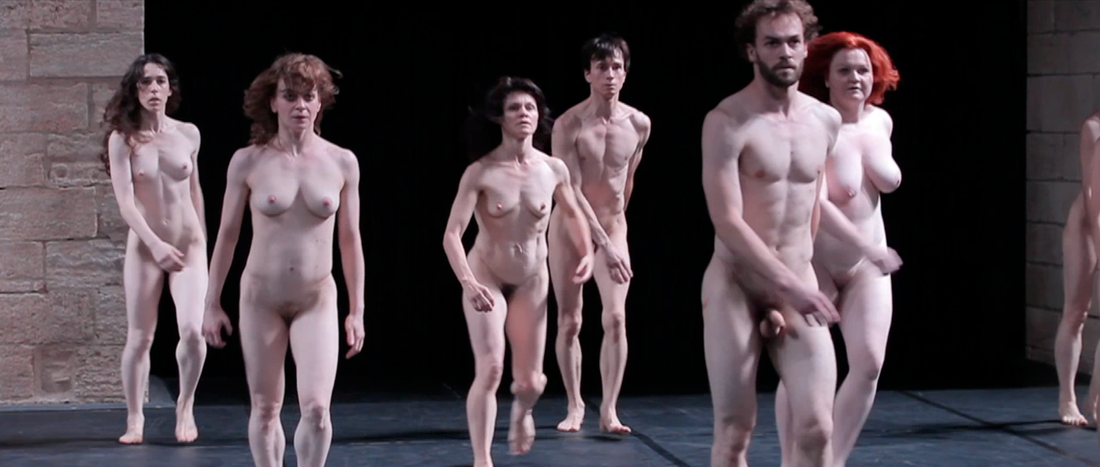
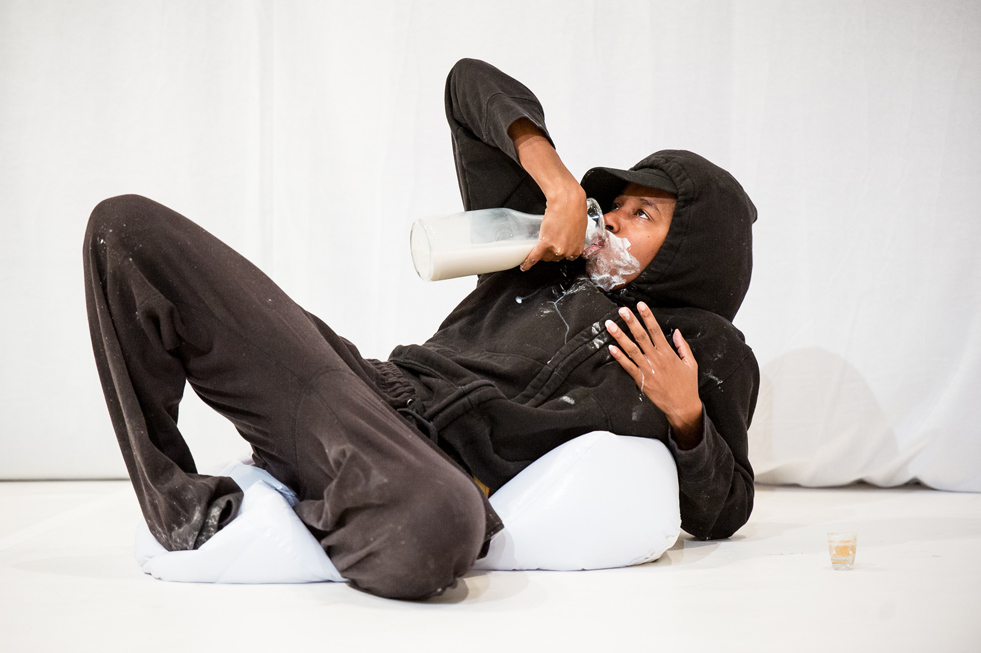
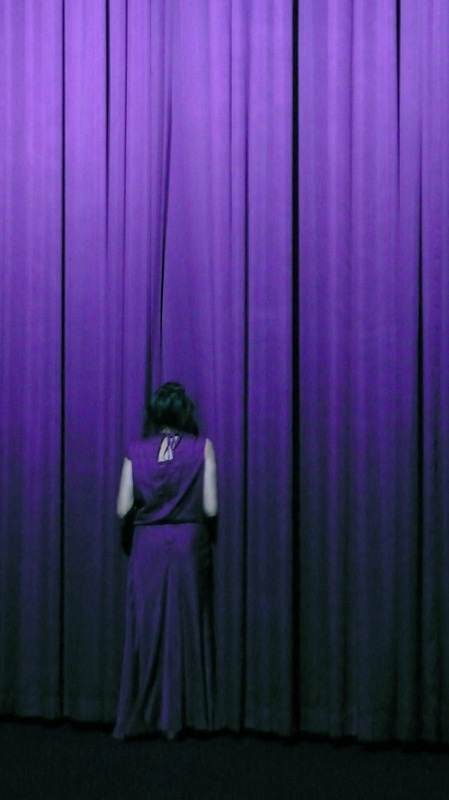
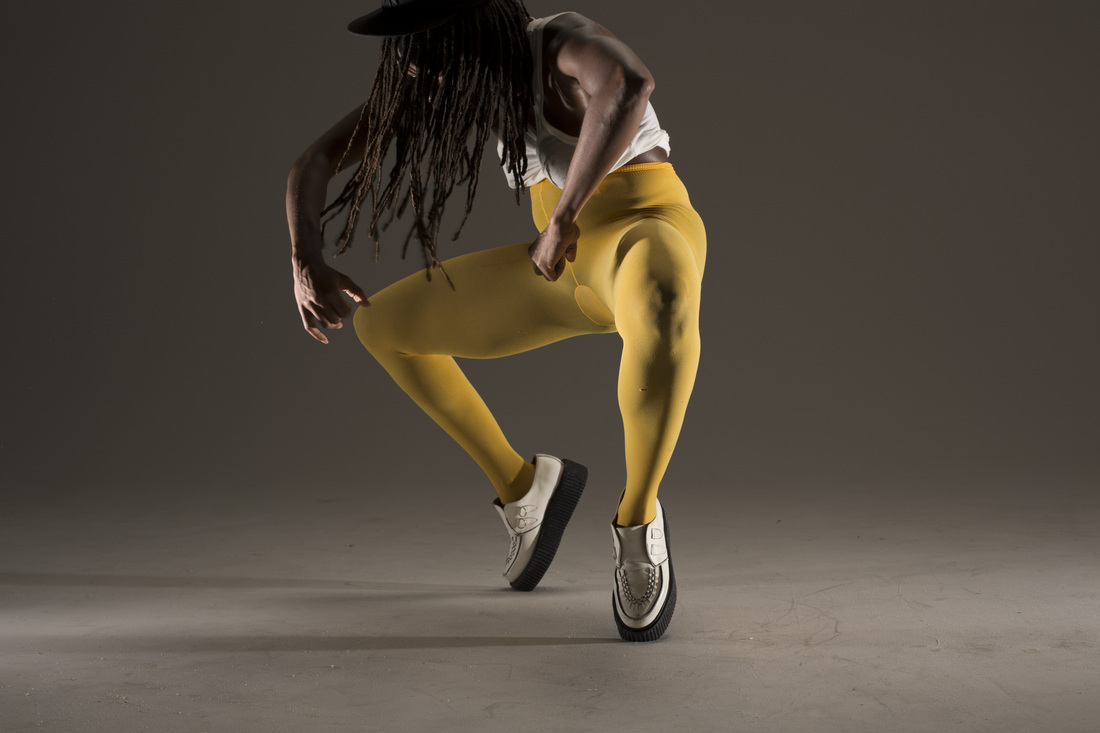
 RSS Feed
RSS Feed